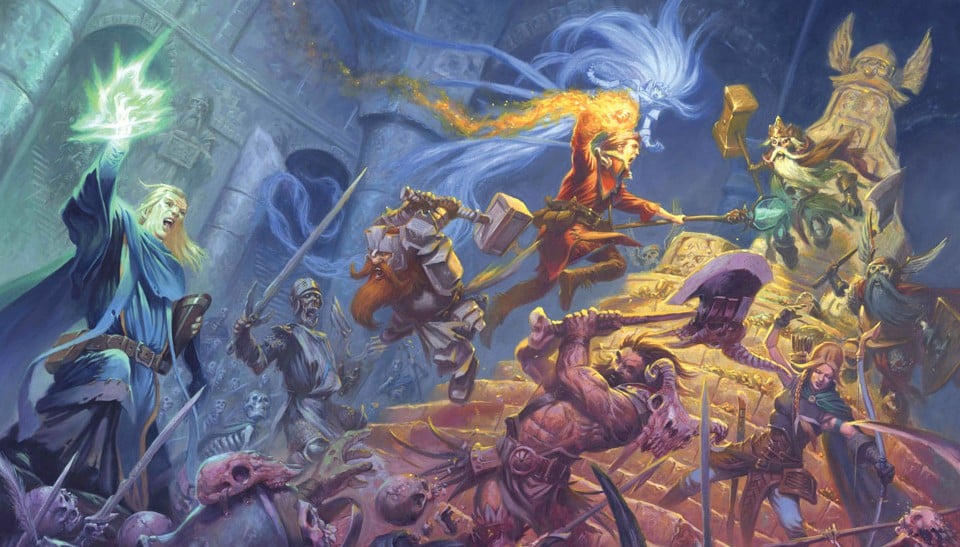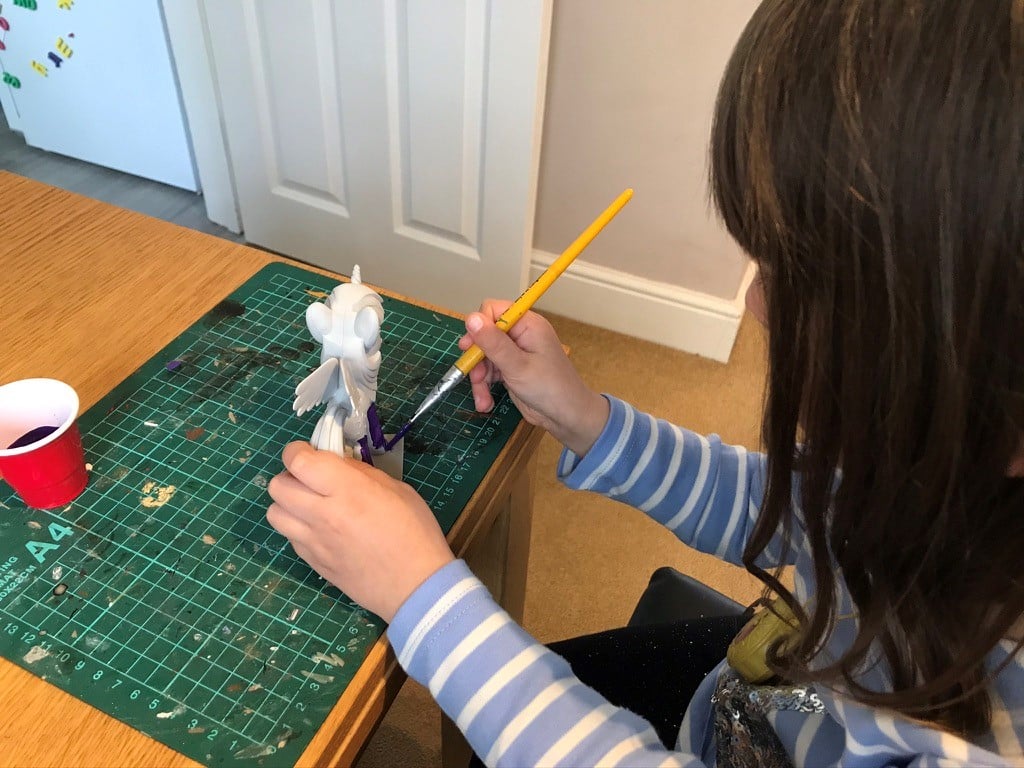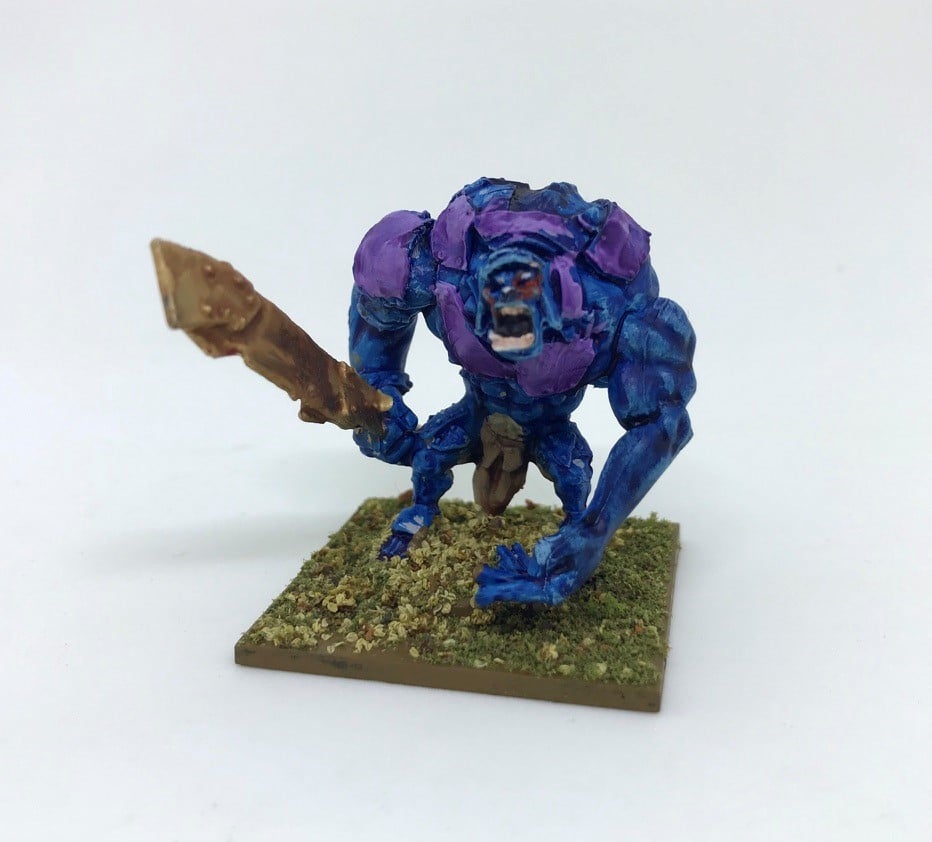A guide to getting kids painting!
19th May 2020
Rob Burman
With many families still home schooling and half-term coming up in the UK, now might be the time to get your budding hobbyists into some painting. Thankfully Pathfinder (and teacher) Mat Green is here with some tips and advice.
One of the best things about our hobby, is its innately social nature. Whether we are playing games, discussing them, or talking about our painting and modelling, we generally do it with other people. One of the good things to come out of the last few weeks, is that many of us are spending a lot more time with our children.

Games such as Dungeon Saga and Star Saga have proved great hits with a lot of younger family members. My favourite thing to with my daughter, however, has been to paint. It’s great fun, so I wanted to take a few minutes to talk about the things I have done to help my daughter learn to paint and maybe encourage a few more people to give it a go.
Before I start, while I am a primary school teacher, I don’t teach the very young children, and all children develop at very different times and in different ways. These are just suggestions of the things that helped me.
When to start?
I don’t see any reason why we can’t start painting with children very young. If they are old enough to hold a crayon and scribble, they can have fun painting. I first sat with my daughter and helped her paint the week after she turned two. It was a great thing we could do together. Since these musings are based mostly on my experiences with my own daughter, they are really only aimed at children from two to about five or six. Obviously, you really do need to manage your expectations. The concentration span of a two-year-old is not long and to begin with, my only intention was for her to have fun.
What to use?
The models you use really depends on the age and interests of your child. I found that a good starting point are the models that come as covermount ‘gifts’ on children’s comics. These plain white models are often cheap, large, and have big details. Themed around children’s characters, from CBeebies to Disney, they grab a child’s attention.

As they gain experience and start to enjoy painting for its own sake, you can move onto real models. Large and monstrous infantry, such as trolls and water elementals, are a good next step, with models such as the Dungeon and Star saga minions following on well. In particular PVC seems to be a very forgiving material for young children to use.

- While you might not start with ‘real’ miniatures, I would start with real miniature paints. The acrylics that come with the children’s kits are very runny and low in pigment. Their coverage is not great, and that can be frustrating for any child. I have found it useful to thin the paint, but to a point where it's not yet too translucent. Contrast paints are actually ideal as they get older, as they are thin enough to move around, naturally flow around details and do a bit of shading for them.
- My daughter did start using the naff brush that came on the comics and moved onto a reasonable but cheap brush from a craft shop. Good brush control takes time and teaching so the first few brushes probably won’t survive. We’re looking for stiff enough for them to be able to push quite hard, and reasonably large.
- Give them an apron. I didn’t to begin with. I’d seen her eat; I should have known better.
- Get a hairdryer. Waiting for paint to dry is not a lot of fun!
How to help them?
- To begin with, I had to hold the model for my daughter, and even now I still do for the larger ones. As they get old enough to hold both the paint brush and model, some sort of paint handle comes in handy. I know it sounds obvious but remember what you can see isn’t what they can see, so you might need to keep turning the model for them.
- To begin with put the paint on the brush for them, and even when they do start putting it on themselves, move the paint out of the way in between dunkings. The time for a small hand to go from pallet, into the paint and back over their face is minuscule.
- If possible, let them choose the colours. Even if they choose odd combinations and paint parts in odd colours, give them colour control gives them a small sense of ownership. That might mean a blue troll with pink armour.
- I tried to teach my daughter to paint into very small steps. These are just the steps we followed.
- The first session was really just to get her engaged and to show her how to hold a brush.
- After that, we moved onto learning to move paint around. In my experience, even with my Year 4 class, a child does not seem to naturally realise that once paint is on a model it can be moved and that big blobs need to be spread out).
- Next we talked about moving the brush in just one direction.
- Finally, we have started concentrating more on ‘colouring in the line’ and tracing around details. A combination of contrast paints to paint the body of her troll, with normal paint to fill in the armour plates worked really well.
- We are just starting to look at very simple shading techniques, such as washing and drybrushing.
- As you teach a new technique, I would suggest getting them to say what they are doing as they do it. Saying ‘up and down, up and down’ might be a little annoying, but combining a child’s senses is a great way of making it sink in.
- Don’t expect to paint it all in one go. Painting a few parts and then stopping to play, before continuing later in the day or even another day, stop it becoming a chore they don’t want to do with us.
- Don’t be afraid to use the correct language with very young children. I’ve often heard parents, even other teachers, say that they need to remove all complex language when teaching young ‘uns, but if you’ve ever heard a nursery child reel off the full scientific names for their whole dinosaur collection, you’ll know they are just words to them. It’s also much easier to explain to them what to do next if you use words like ‘medium’, ‘wash’ and ‘drybrush’.
- Basing seems to be the part children most enjoy. Even a very young child finds it easy to slosh PVA glue around and sprinkling flock is fun. A quick trip to the garden to collect natural basing materials, such as catkins, gives the activity another level. A word of warning, however, don’t ever, under any circumstances, ever think mixing glitter in with flock is a good idea. It will infect your workspace for months.
I hope that helps and encourages some more people to sit down with their children and brush. If anyone has any questions feel free to drop me a message at https://www.facebook.com/KingsOfHertsEvents/
Mat Green,
Parent, Teacher and Pathfinder

 GBP
GBP  EUR
EUR  USD
USD